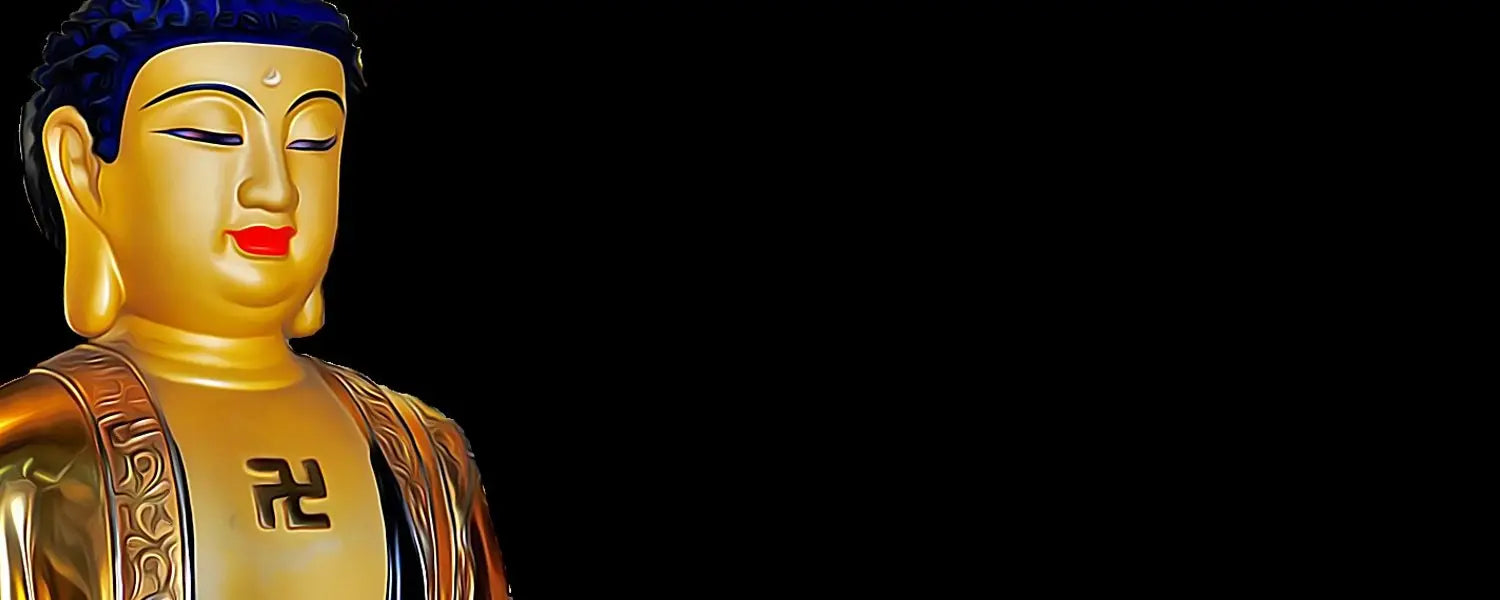Meaning of the Swastika in Buddhism

Swastika, the Buddhist Cross before being "HITLER's Swastika"
Just like the Hindus, the Buddhists have also used the swastika to mark the beginning of Buddhist texts because they consider it a symbol of universal harmony, prosperity, plurality, good luck, abundance, dharma, fertility, long life, eternity. In different parts of the world, Buddhist gives different meaning to the swastika.
For example, in Tibet, the swastika was a graphic representation of eternity. There are 65 promising symbols on the Buddha's footprint and the swastika is considered the first. You can also find the swastika symbol printed on the body, palms, chest or feet of the Buddha. It is used to mark the beginning of sacred texts or as clothing decoration. Buddhists in India consider the swastika to be "The Seal on the Heart of Buddha".
Take advantage of this special offer while stocks last!

Click here to see all our Buddhist bracelets
Since ancient times, the swastika has been considered noble, which is well known in most cultures throughout history. It is also the most loved symbol of the Aryans.
MEANING OF THE SWASTIC IN BUDDHISM

The word "swastika" comes from the Sanskrit swastika - "su" ("good" or "auspicious") united with "asti" ("he is"), with the diminutive suffix "ka". The swastika literally means: "It's okay" or "everything is fine." The swastika is a cross with four arms of equal length, with the ends of each arm bent at right angles. It is found in the art of Egyptians, Romans, Greeks, Celts, Native Americans and Persians around the world. It is also linked to Hinduism, Buddhism, Jainism, and is used in the flag of the Nazi Party. People use the swastika as a charm to bring good luck.
Also read: Buddhist symbols | The Vajra (Thunderclap)
The swastika has always been a symbol of peace before the Nazi Party took it over and made it its symbol. In Buddhism, it is representative of the footprints of the Buddha. It is an aniconic symbol for the Buddha in many parts of Asia and a counterpart to the dhamma wheel. The shape symbolizes eternal cycling, a theme found in the Buddhist doctrine of samsara.
Click here to see all our Buddhist rosaries and malas Tibetans
The symbol of the swastika is common in the esoteric tantric traditions of Buddhism, with Hinduism, where it is found with chakra theories and other aids meditative. The clockwise symbol is more common and contrasts with the counterclockwise version common in the Tibetan Bon tradition and locally called yungdrung.
In addition, the name swastika comes from Sanskrit (Devanagari: स्वस्तिक) and means "conducive to well-being or auspicious". It was never intended to represent the horrible things that Nazism and white nationalism represent. I think it is time for Buddhism and other peaceful religions to reclaim their symbols from these hateful organizations. This is one of the only ways Buddhists and others like us can use our sacred symbols again.
















































3 comments
Pinai
J’ai trouvé une bague ,il y a des écrits dessus ,j’aurais aimer savoir ça signification merci à vous
ROUFFIAC
Bjr, pourrais-je recevoir cette svatiska dorée mais avec chaîne idem ? En vous remerciant. Cordialement et respectueusement.
Julien bres
Le plus BÉAU DES CADEAU C EST LA VIE ÉT NON LA HAINE LA DESTRÙCTION ,
La NAISSANCE EST LE PLUS BEAU DES CADEAUX .
Vivre APPRENDRE SANS AVOIR LA PEUR NI LA HAINE ,
VIVRE EN HARMONIE SANS CONNAITRE LA PEÙR LA HAINE
VIVRE AVEC LE VENT